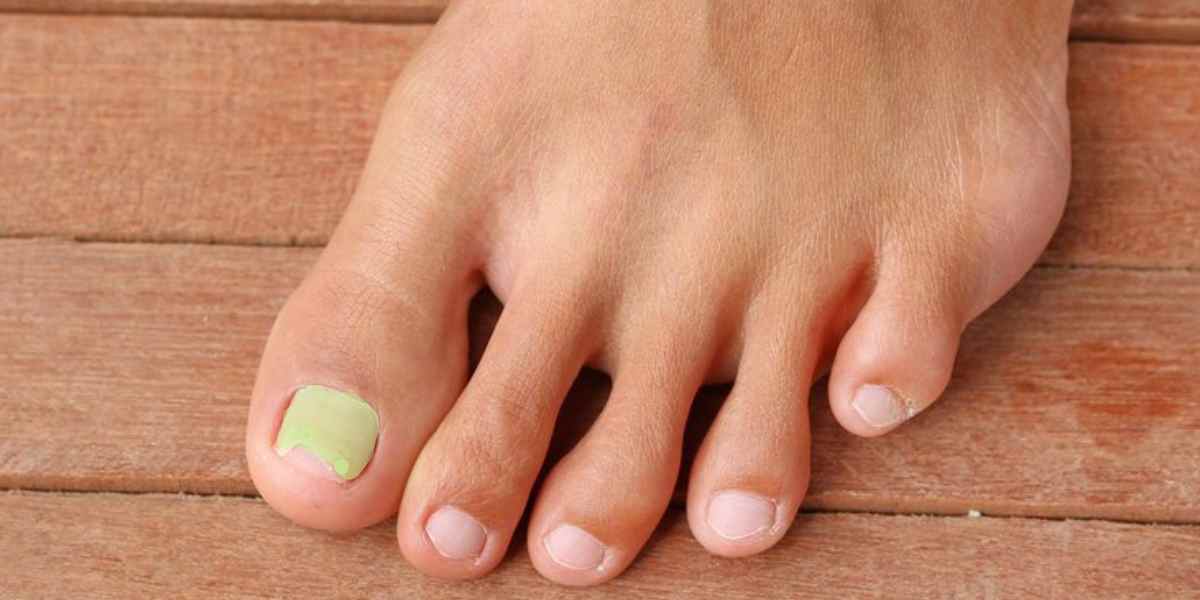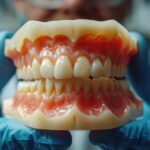Before exploring the pros and cons of laser treatment for toenail fungus and why it can be so challenging to treat, it is essential to understand what toenail fungus. Laser treatment for toenail fungus offers high efficacy, minimal side effects, and improved cosmetic results, but it can be costly and may not be available everywhere. Success rates can vary, and there’s a potential for recurrence. Patients should weigh these factors to decide if it’s the right option for them.
Contents Overview
- What is Laser Treatment for Toenail Fungus?
- Understanding Onychomycosis
- How Laser Treatment Works
- Pros of Laser Treatment for Toenail Fungus
- Cons of Laser Treatment for Toenail Fungus
- Comparing Laser Treatment with Other Options
- What to Expect During and After Laser Treatment
- Preventing Toenail Fungus Recurrence
- Conclusion
What is Laser Treatment for Toenail Fungus?
Understanding Onychomycosis
Before exploring the pros and cons of laser treatment for toenail fungus and why it can be so challenging to treat, it is essential to understand what toenail fungus is. Onychomycosis is a fungal infection that explicitly impacts the nails, often caused by dermatophytes, yeasts, or molds. It usually begins as a white or yellow spot underneath the end of the toenail. It can spread deeper into the nail, causing it to thicken, discolor, and crumble at the edges for Pros and Cons of Laser Treatment for Toenail Fungus.
How Laser Treatment Works
Laser treatment uses focused light energy to target specific body areas for various medical or cosmetic purposes and destroy the fungus in and under the toenail. The laser emits pulses of energy that generate heat, effectively killing the fungal cells without damaging the surrounding tissue. There are different types of lasers used in the treatment, such as Nd lasers, diode lasers, and CO2 lasers, each with its specific mechanism of action for understanding Pros and Cons of Laser Treatment for Toenail Fungus.
Pros of Laser Treatment for Toenail Fungus
High Efficacy Rate
One of the basic advantages of laser treatment for toenail fungus is its high efficacy rate. Studies have shown that laser therapy can achieve a significant reduction in fungal infection and improve the appearance of the affected nails. Patients often experience noticeable improvements after just a few sessions.
Non-Invasive Procedure
Laser treatment is a noninvasive procedure, meaning it does’t require any surgical incisions or injections. This makes it an attractive option for individuals who prefer to avoid risks and downtime associated with invasive treatments.
Minimal Side Effects
Unlike oral antifungal medications, which can have severe effects such as liver damage and gastrointestinal issues, laser treatment has minimal side effects. The most common side effect reported is a mild warming sensation during the procedure, which is generally well-tolerated by patients to know Pros and Cons of Laser Treatment for Toenail Fungus.
Quick and Convenient
Laser treatment sessions are relatively quick, typically lasting between 20 to 30 minutes. Most patients require three to four sessions several weeks apart to achieve optimal results. This convenience allows patients to fit the treatment into their busy schedules without significant disruption to diffentiate Pros and Cons of Laser Treatment for Toenail Fungus.
No Drug Interactions
Laser treatment does not involve the use of any medications, making it an ideal choice for individuals who may have contraindications or are already taking multiple medications. This eliminates the risk of drug interactions and the need for monitoring liver function, which is necessary with oral antifungal treatments.
Cosmetic Benefits
In addition to eliminating fungus, laser treatment can also improve the cosmetic appearance of the nails. Patients often report their nails becoming clearer, smoother, and less thickened after treatment. This can boost self-esteem and confidence, especially for those who feel self-conscious about the appearance of their toenails.
Cons of Laser Treatment for Toenail Fungus
Cost
One of the most significant drawbacks of laser treatment for toenail fungus is the cost. Laser therapy can be expensive, with each session ranging from $250 to $550, depending on location and provider. Since multiple sessions are typically required, the total cost can add up quickly. Moreover, many insurance plans do not cover laser treatment for toenail fungus, considering it a cosmetic procedure.
Limited Availability
Laser treatment for toenail fungus is not available in all medical facilities. Patients may need to travel to specialized clinics or dermatology centers that offer this service. This can be inconvenient, particularly for those living in rural or remote areas.
Variable Success Rates
While laser treatment has a high efficacy rate, success can vary depending on the severity of infection, the type of fungus involved, and the individual patient’s response to the treatment. Some patients may require additional sessions or alternative treatments if the infection persists or recurs.
Potential for Recurrence
Toenail fungus has a notorious reputation for recurring, even after successful treatment. While laser therapy can significantly reduce the fungal load, it does not guarantee complete eradication. Patients must take preventive measures, such as maintaining good foot hygiene and avoiding environments conducive to fungal growth, to minimize the risk of recurrence.
Lack of Long-Term Data
Laser treatment for toenail fungus is a relatively new modality, and long-term data on its effectiveness and safety is still being collected. While short-term studies have shown promising results, more research is required to know pros and cons of laser treatment for toenail fungus for Toenail fungus determine the long-term outcomes and potential risks associated with this treatment.
Comparing Laser Treatment with Other Options
Topical Antifungal Treatments
Topical antifungal treatments, such as creams, ointments, and nail lacquers, are often the first defense against toenail fungus. These treatments are easy to apply and have minimal side effects. However, they require consistent application over several months and may not penetrate deeply enough into the nail to reach the infection to check Pros and Cons of Laser Treatment for Toenail Fungus.
Oral Antifungal Medications
Oral antifungal medications, like terbinafine and itraconazole, are more potent than topical treatments and can effectively treat toenail fungus. However, they come with a risk of severe side effects, including liver damage and interactions with other medications. Oral antifungals also require a prolonged treatment duration, usually several months.
Home Remedies
Home remedies, like tea tree oil and essential oils, are popular alternatives for treating toenail fungus. While some people report success with these methods, there is limited evidence to support their efficacy. Home remedies may be worth trying for mild cases, but they are unlikely to be effective for severe infections for Pros and Cons of Laser Treatment for Toenail Fungus.
What to Expect During and After Laser Treatment
During the Procedure
During the laser treatment session, the patient is seated comfortably while the clinician directs the laser device at the affected toenails. The laser emits pulses of light energy, which penetrate the nail and target the fungal cells. Patients may feel a mild warming or tingling sensation, but the procedure is generally painless.
After the Procedure
After the laser treatment, there is no downtime, and patients can resume their usual activities immediately. Following the clinician’s post-treatment care instructions is essential, including keeping the feet clean and dry, avoiding tight-fitting shoes, and applying antifungal creams or sprays to prevent reinfection to understand pros and cons of laser treatment for toenail fungus for Toenail fungus.
Results and Follow-Up
Patients typically start to see improvements in the appearance of their toenails within a few weeks to months after the initial treatment. However, the toenail may take up to a year to grow out entirely and reveal the full results. Follow-up sessions may be necessary to ensure the infection is wholly eradicated and to monitor for any signs of recurrence.
Preventing Toenail Fungus Recurrence
Proper Foot Hygiene
Proper foot hygiene is crucial in preventing toenail fungus recurrence. This includes washing the feet regularly, drying them thoroughly, and trimming and cleaning the toenails. Wearing breathable socks and shoes that allow air circulation can also help prevent fungal growth.

Avoiding Fungal Hotspots
It is essential to avoid environments conducive to fungal growth, such as public swimming pools, locker rooms, and communal showers. If you must use these facilities, wearing flip-flops or shower shoes can help protect your feet from exposure to fungi.
Using Antifungal Products
Antifungal sprays, powders, or creams applied to the feet and inside shoes can help prevent reinfection. These products create an inhospitable environment for fungi, reducing the risk of recurrence.
Regular Monitoring

Regular monitoring of your toenails for any signs of infection is vital. If you notice any changes in your nails’ color, texture, or thickness, seek medical advice promptly. Early detection can prevent the infection from becoming severe and reduce the need for extensive treatment to know pros and cons of laser treatment for toenail fungus for Toenail fungus.
Conclusion
Pros and cons of laser treatment for toenail fungus offers a promising alternative to traditional treatments. It offers numerous advantages, such as high efficacy, minimal side effects, and improved cosmetic outcomes. However, it also comes with drawbacks, including cost, limited availability, and the potential for recurrence. By weighing the pros and cons and considering individual circumstances, patients can make an informed decision about whether laser treatment is the right choice for them.
Laser treatment may not be a one-size-fits-all solution in the fight against toenail fungus, but it represents a significant advancement in the options available for those suffering from this persistent condition. Patients can enjoy healthier, clearer nails, reducing the impact of toenail fungus on their lives.











